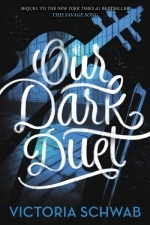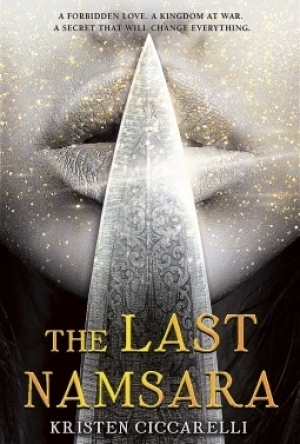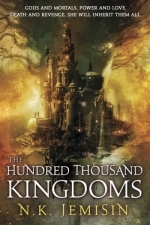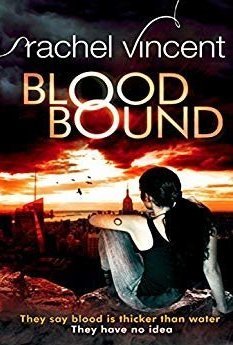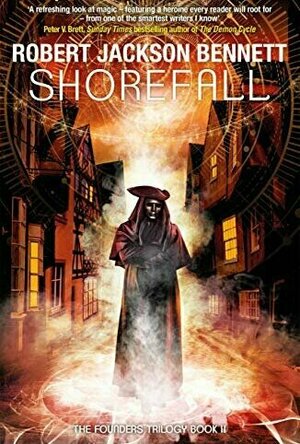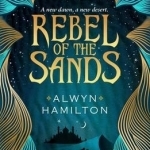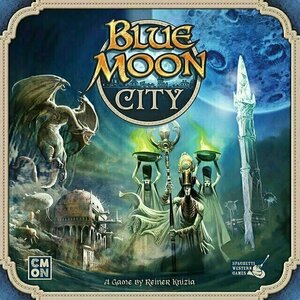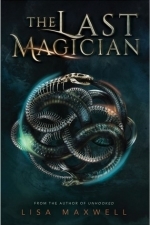Search
Search results
Lyndsey Gollogly (2893 KP) rated Sophie and the Odd Ones ( Sophie Feegle book 1) in Books
Dec 15, 2022
221 of 230
Kindle
Sophie and the Odd Ones ( Sophie Feegle book 1)
By Gwen DeMarco
⭐️⭐️⭐️⭐️⭐️
Sophie Feegle needs a break. Rent is due on her crappy apartment and she's halfway through her last loaf of bread.
Sophie doesn't have big ambitions. She only wants a job that will keep her landlord off her back, enough extra cash for whiskey at the neighborhood bar and a bit of free time to hang out with the naughty old lady next door.
When a chance encounter with a quiet stranger leads to a job offer at the San Francisco City Morgue, Sophie jumps at the opportunity. She never expected to find her calling on the graveyard shift surrounded by dead bodies and the strange characters that make up the morgue's staff. Finding out that your friends and co-workers are shifters, ogres and other non-human creatures is a shock, but Sophie quickly realizes that these are her people, and she has finally found her perfect gig.
And then things get odd. Well… odder.
Unusual murders keep ending up on Sophie’s autopsy table, hinting at strange powers working within the city. Something nefarious is building in San Francisco, and it is up to Sophie and her friends to thwart the evil powers on the rise.
I absolutely loved this! It was funny and a refreshing enjoyable read. It was really good to see an author using the non apex predator shifters as the crime fighting team. If you’re looking for a supernatural fun read this is definitely recommended.
Kindle
Sophie and the Odd Ones ( Sophie Feegle book 1)
By Gwen DeMarco
⭐️⭐️⭐️⭐️⭐️
Sophie Feegle needs a break. Rent is due on her crappy apartment and she's halfway through her last loaf of bread.
Sophie doesn't have big ambitions. She only wants a job that will keep her landlord off her back, enough extra cash for whiskey at the neighborhood bar and a bit of free time to hang out with the naughty old lady next door.
When a chance encounter with a quiet stranger leads to a job offer at the San Francisco City Morgue, Sophie jumps at the opportunity. She never expected to find her calling on the graveyard shift surrounded by dead bodies and the strange characters that make up the morgue's staff. Finding out that your friends and co-workers are shifters, ogres and other non-human creatures is a shock, but Sophie quickly realizes that these are her people, and she has finally found her perfect gig.
And then things get odd. Well… odder.
Unusual murders keep ending up on Sophie’s autopsy table, hinting at strange powers working within the city. Something nefarious is building in San Francisco, and it is up to Sophie and her friends to thwart the evil powers on the rise.
I absolutely loved this! It was funny and a refreshing enjoyable read. It was really good to see an author using the non apex predator shifters as the crime fighting team. If you’re looking for a supernatural fun read this is definitely recommended.
Kyera (8 KP) rated Our Dark Duet in Books
Jan 31, 2018
Oh, my heart. I can't. I absolutely adore V.E. Schwab's books and this series is no different. Her stories are more of a slow burn than constant, action-packed scenes but that style lends itself fantastically to her incredible world building. The first book took place solely in Verity, or V-City, a place overrun by monsters. We heard about the other cities in This Savage Song, but in Our Dark Duet, we were able to experience one of the other ones. People always said that there were no monsters in Prosperity, but they were wrong. The city just had a different type of monster.
One of those different monsters finds its way to Verity and forces Kate to return home. Both Kate and August are different, having been forced to confront or suppress their demons. August is still my favourite of the two main characters, despite his struggles. They both experience character development that makes you feel for them and only wish for their happiness.
I am glad that we got a little more development of some of the secondary characters. Schwab populated her books with such a variety of interesting and unique characters that you want to get to know them better. You want to discover their motivations, desires, fears, and secrets. The additional depth provided to Ilsa makes you love her and just want to protect her from harm. The other character that I loved the introduction of would be spoiler-y, so I'll just say I enjoyed the unique perspective they gave to the story and the diversity they added.
This world was so richly populated and described that it easily blooms into existence within your mind. Although this is only a duology and the final book, I would love to see more books set within this world. Perhaps the story in Verity is done, but there are plenty more monsters and cities to explore.
The story takes readers along on a steady, but not slow, ride that culminates with a dramatic flourish that will leave you breathless, a little heartbroken, yet hopeful.
I would highly recommend this fantastic urban fantasy series to all young adult/teen readers who enjoy fantasy, immersive world building, character development and V.E. Schwab's other books (like the Shades of Magic trilogy).
One of those different monsters finds its way to Verity and forces Kate to return home. Both Kate and August are different, having been forced to confront or suppress their demons. August is still my favourite of the two main characters, despite his struggles. They both experience character development that makes you feel for them and only wish for their happiness.
I am glad that we got a little more development of some of the secondary characters. Schwab populated her books with such a variety of interesting and unique characters that you want to get to know them better. You want to discover their motivations, desires, fears, and secrets. The additional depth provided to Ilsa makes you love her and just want to protect her from harm. The other character that I loved the introduction of would be spoiler-y, so I'll just say I enjoyed the unique perspective they gave to the story and the diversity they added.
This world was so richly populated and described that it easily blooms into existence within your mind. Although this is only a duology and the final book, I would love to see more books set within this world. Perhaps the story in Verity is done, but there are plenty more monsters and cities to explore.
The story takes readers along on a steady, but not slow, ride that culminates with a dramatic flourish that will leave you breathless, a little heartbroken, yet hopeful.
I would highly recommend this fantastic urban fantasy series to all young adult/teen readers who enjoy fantasy, immersive world building, character development and V.E. Schwab's other books (like the Shades of Magic trilogy).
Kyera (8 KP) rated The Last Namsara (Iskari, #1) in Books
Feb 1, 2018
The Last Namsara is Kristen Ciccarelli's debut novel and I am in love. The world building was brilliantly done and laid a strong foundation for her story to grow and develop.
Asha is a dragon hunter and a feared Iksari who is strong and dedicated to her role in the kingdom. Despite the fact that her actions as a child called the dragons who burned her city, she fights every day to redeem herself from her past mistakes and make her father, the King, proud. It was nice to see the main character learns to value herself, even though she has grown up shamed and feared by the people. She overcomes her prejudices and the damage instilled upon her over the course of the novel.
Her transformative journey begins when a slave, Torwin is introduced to her life. He treats her like a normal person, just as she learns to treat him as one. He opens her eyes to the truth of the world and thaws her damaged heart, leading her to learn so much about the people in her kingdom and a better way to live.
There was also a well-written antagonist who was so controlling and cruel that you couldn't help but hate him. It was a nice juxtaposition to Torwin's character and helped push the plot along. For me, the romance was a secondary plot point and sometimes only slowed down the pacing. It wasn't the most important element of the story.
The world building, mythology and the dragons are what shone for me. I cannot wait to see more of this world. I listened to this via audiobook and the narrator, Pearl Mackie did a fantastic job. I loved the authenticity she brought to Asha's character and would highly recommend this audiobook.
Asha is a dragon hunter and a feared Iksari who is strong and dedicated to her role in the kingdom. Despite the fact that her actions as a child called the dragons who burned her city, she fights every day to redeem herself from her past mistakes and make her father, the King, proud. It was nice to see the main character learns to value herself, even though she has grown up shamed and feared by the people. She overcomes her prejudices and the damage instilled upon her over the course of the novel.
Her transformative journey begins when a slave, Torwin is introduced to her life. He treats her like a normal person, just as she learns to treat him as one. He opens her eyes to the truth of the world and thaws her damaged heart, leading her to learn so much about the people in her kingdom and a better way to live.
There was also a well-written antagonist who was so controlling and cruel that you couldn't help but hate him. It was a nice juxtaposition to Torwin's character and helped push the plot along. For me, the romance was a secondary plot point and sometimes only slowed down the pacing. It wasn't the most important element of the story.
The world building, mythology and the dragons are what shone for me. I cannot wait to see more of this world. I listened to this via audiobook and the narrator, Pearl Mackie did a fantastic job. I loved the authenticity she brought to Asha's character and would highly recommend this audiobook.
Mekkin B. (122 KP) rated The Hundred Thousand Kingdoms in Books
Sep 9, 2017
Worldbuilding (1 more)
Thoughtful and Engaging Characters
Tight, compelling story set in an amazing fantasy world
The Hundred Thousand Kingdoms has the kind of engaging plot and clear prose that makes it easy to get lost in. Jemisin's debut novel crafts a complex world that fans of traditional fantasy will love, while still being incredibly fresh and thoughtful. The worldbuilding engages in the complexities of colonialism and cultural difference in a way that makes the world feel alive and thrumming with conflict.
Yeine is a compelling protagonist and Nahadoth, her romantic interest, is sexy, dark, and tortured (like all good love interests should be.) It's 410 pages of pure fantasy fun.
The only nitpick I have is that I wish there was more of it. Seriously. The advice to writers is to start as late in the story as possible, but I wish more time had been spent building up Yeine's world and her relationship with her mother (who's death is pivotal to the plot), and with her own Kingdom of Darre. Instead the reader enters the story with Yeine already making her way to the city of Sky. This, for me, lessened the emotional impact of later reveals.
Yeine is a compelling protagonist and Nahadoth, her romantic interest, is sexy, dark, and tortured (like all good love interests should be.) It's 410 pages of pure fantasy fun.
The only nitpick I have is that I wish there was more of it. Seriously. The advice to writers is to start as late in the story as possible, but I wish more time had been spent building up Yeine's world and her relationship with her mother (who's death is pivotal to the plot), and with her own Kingdom of Darre. Instead the reader enters the story with Yeine already making her way to the city of Sky. This, for me, lessened the emotional impact of later reveals.
Sean Lennon recommended Shakara/London Scene by Fela Kuti in Music (curated)
Leanne Crabtree (480 KP) rated Blood Bound (Unbound, #1) in Books
Sep 6, 2019
3.5 stars
First off I can't quite believe it just ended like that! WTF?! But at the same time, I have a feeling I know what Liv chose to do.
This will be my third series by the author and probably joint second with her Soul Screamers, with Shifters being number one--which I really loved.
Blood Bound took me a lot of getting into and I can honestly say that the best and most enjoyable bit for me was the last 150 pages or so when it finally all came out and they were going to do the job that had been building for most of the book.
The whole Skills thing was very interesting and the two gangs in the city wanting to off the other was quite entertaining especially with the bindings and tattoo's.
It was complicated at times with the overlapping bindings and friendships/loyalty and just because of those last 150 pages I've marked it up half a star. Not sure if I'll read the next book, though.
First off I can't quite believe it just ended like that! WTF?! But at the same time, I have a feeling I know what Liv chose to do.
This will be my third series by the author and probably joint second with her Soul Screamers, with Shifters being number one--which I really loved.
Blood Bound took me a lot of getting into and I can honestly say that the best and most enjoyable bit for me was the last 150 pages or so when it finally all came out and they were going to do the job that had been building for most of the book.
The whole Skills thing was very interesting and the two gangs in the city wanting to off the other was quite entertaining especially with the bindings and tattoo's.
It was complicated at times with the overlapping bindings and friendships/loyalty and just because of those last 150 pages I've marked it up half a star. Not sure if I'll read the next book, though.
Mediocre sequel
I received a free copy from Netgalley in exchange for an honest review.
Shorefall picks up around three years after the events of Foundryside, when a small crew stand up against the mighty, powerful families of the city, stop their evil plotting and strike out on their own. They have set up their own, independent scriving house, making magical machinery, and helping others to do the same. A bit like BrewDog, but without the financially dubious shareholder arrangements.
In this world, magic comes in the form of scriving - bending reality to make objects behave in a certain way (persuading a door it cannot open without a specific person being present, convincing an arrow it is falling, so must accelerate accordingly, albeit in a straight line, etc). Most of the book's plot and action centre around this, and it becomes quite draining, and a stretch at times. I forgave the first book quite a lot in this regard, because it was world-building, but this much world-building in a second book seems wrong. And the mechanics of it are so much like coding that that is all you can think of. At times it is like watching an episode of 24, but instead of following Jack Bauer's thrilling escapades, you are watching Chloe coding a macro to speed up her timesheets while being vaguely aware that something exciting is happening.
The book starts very strongly, we are in the company of Sancia and Orso as they appear to be down on their luck and having to sell their work to make ends meet. Cue: exciting espionage scenes as Sancia sneaks off to steal.
Sadly, this opening chapter in which we had no idea what was happening was the best one. So many times throughout the book the crew were on some mission or other for some reason, but I couldn't for the life of me remember what or why, and nor did I particularly care. The plot just seemed to be in a backseat with the world-building driving with no sat-nav. And so was character development, as all the main characters just completely plateaud and didn't change in the slightest.
In short, I found the book very dull and drawn out and the second half was a real chore.
Shorefall picks up around three years after the events of Foundryside, when a small crew stand up against the mighty, powerful families of the city, stop their evil plotting and strike out on their own. They have set up their own, independent scriving house, making magical machinery, and helping others to do the same. A bit like BrewDog, but without the financially dubious shareholder arrangements.
In this world, magic comes in the form of scriving - bending reality to make objects behave in a certain way (persuading a door it cannot open without a specific person being present, convincing an arrow it is falling, so must accelerate accordingly, albeit in a straight line, etc). Most of the book's plot and action centre around this, and it becomes quite draining, and a stretch at times. I forgave the first book quite a lot in this regard, because it was world-building, but this much world-building in a second book seems wrong. And the mechanics of it are so much like coding that that is all you can think of. At times it is like watching an episode of 24, but instead of following Jack Bauer's thrilling escapades, you are watching Chloe coding a macro to speed up her timesheets while being vaguely aware that something exciting is happening.
The book starts very strongly, we are in the company of Sancia and Orso as they appear to be down on their luck and having to sell their work to make ends meet. Cue: exciting espionage scenes as Sancia sneaks off to steal.
Sadly, this opening chapter in which we had no idea what was happening was the best one. So many times throughout the book the crew were on some mission or other for some reason, but I couldn't for the life of me remember what or why, and nor did I particularly care. The plot just seemed to be in a backseat with the world-building driving with no sat-nav. And so was character development, as all the main characters just completely plateaud and didn't change in the slightest.
In short, I found the book very dull and drawn out and the second half was a real chore.
Goddess in the Stacks (553 KP) rated Rebel of the Sands in Books
May 19, 2018 (Updated May 19, 2018)
Amani is a girl in a country that doesn't value women, and treats them as useless property only good for breeding sons. The country is basically occupied by another country that the Sultan is "allied" with, but lets run roughshod over his people. She has her sights set on escaping her backwoods, dead-end town, and running to the capital city, where the aunt she's never met lives. All of that is derailed when she meets Jin at an underground shooting competition, and then later hides him from the armed forces hunting him.
The country is definitely middle-east inspired, but there's a lot of religion-bashing, and complaining about the culture oppressing women. It's the same problem I have with a lot of knight-and-castle era fantasy - just because historically in OUR world those time periods weren't kind to women, doesn't mean they have to be the same in fantasy. It's FANTASY! It can be anything you want! Break the tropes! It's a fine line to walk, taking the good parts of a culture without just cherry-picking and appropriating the culture, and who's judging what the good and bad parts are, anyway? So I understand it's difficult, but bashing the culture in a book inspired by their mythology is not quite cool, either. I feel like City of Brass, another fantasy book set in the middle east, hit a better middle ground of embracing the culture of the inspiration without bashing parts of it.
That gripe aside, I really enjoyed the world-building. I'm not quite sold on the characters yet - Amani is far too quick to abandon things she should fight for - but I'm interested enough to see how they progress in the next two books.
You can find all my reviews at http://goddessinthestacks.wordpress.com
The country is definitely middle-east inspired, but there's a lot of religion-bashing, and complaining about the culture oppressing women. It's the same problem I have with a lot of knight-and-castle era fantasy - just because historically in OUR world those time periods weren't kind to women, doesn't mean they have to be the same in fantasy. It's FANTASY! It can be anything you want! Break the tropes! It's a fine line to walk, taking the good parts of a culture without just cherry-picking and appropriating the culture, and who's judging what the good and bad parts are, anyway? So I understand it's difficult, but bashing the culture in a book inspired by their mythology is not quite cool, either. I feel like City of Brass, another fantasy book set in the middle east, hit a better middle ground of embracing the culture of the inspiration without bashing parts of it.
That gripe aside, I really enjoyed the world-building. I'm not quite sold on the characters yet - Amani is far too quick to abandon things she should fight for - but I'm interested enough to see how they progress in the next two books.
You can find all my reviews at http://goddessinthestacks.wordpress.com
Purple Phoenix Games (2266 KP) rated Blue Moon City in Tabletop Games
Aug 27, 2021
Ahh Blue Moon. Delicious on a hot Summer day night. Hefeweizen is my favorite type of beer, but most places do not serve my all-time fave Hefe: Paulaner Hefe-Weizen. If you haven’t yet tried it, you must. I’m no snob or anything, so I’ll take the Blue Moon when I can’t have the Paulaner, but I wanted you all to know my tastes. So when I heard about a game that was all about a city named after a beer I enjoy (but only with an orange slice) I had to try it. Did it live up to my expectations or did it- wait, this game isn’t about beer? Why the heck did I-
Blue Moon City is a fantasy-set, hand management, set collection, city rebuilding game for two to four players. In it players are attempting to help reconstruct the war-ravaged Blue Moon City to its former glory by utilizing its citizens at crucial construction sites in order to earn crystals. It sounds weird, and it is, but read further to understand why. Oh and there are dragons that act like supervisors or teachers when they come stand by you to watch you take a test and judge you from behind the whole time.
To setup, place the Courtyard tile in the middle of the table and build the city in a 5×5 grid minus the corner tiles. Each player chooses their color and takes the mini and discs of that color. Place the dragons nearby, along with the Obelisk token, draw deck of cards, crystal chits, and dragon scale chits. Deal each player a hand of eight cards and the game may begin!
Blue Moon City is played over a series of turns, and each turn is divided into four phases: Movement, Contribution, Reset, Pass Turn. During the optional Movement phase, a player may move their pawn one to two orthagonal spaces (N/E/S/W) or use cards from their hand for their special movement powers for player pawn AND/OR dragon movement.
Next, a player may discard cards from their hand to contribute to the reconstruction of a building during this optional Contribution phase. By discarding a number of cards whose values equal or exceed the printed value on the matching-colored building tile a player will be able to place a disc upon the tile. Once the tile’s contribution spaces have been filled with discs it can be scored. To score a building tile, determine majority presence on the tile and award the Majority Bonus to that player. Any disc presence in minority will receive the Construction Bonus, including the majority winner. If a player had contributed on a tile that also was hosting a dragon mini, that player would earn a dragon scale from said dragon supervisor. Players may also make their way back to the Courtyard tile in order to donate crystals to the Obelisk. Doing so will allow the player to place one of their discs on the Obelisk itself, and the game ends when a player has placed the proper number of discs upon the Obelisk per the number of players.
When the pile of dragon scale tokens has been exhausted, players will check who currently holds the majority of scales. They will be awarded with six crystals, and any player holding three or more will receive three crystals. Turn all the dragon scales back into the supply to be earned again.
During the Reset phase a player may discard any number of cards from their hand and draw back as many cards plus two. So if a player discards zero cards from hand they would still draw two from the deck. Discarded four cards? Well redraw six.
Finally the active player will Pass Turn to the player on their left, who will complete their turn of the same four phases.
Play continues in this fashion until one player has placed the target number of discs on the Obelisk token to claim victory and dragon approval!
Components. Okay, this is a tough one because overall I love the components in the game. The dragons and player pawns are cool minis (from CMON that just makes sense). The Obelisk token is huge and I love how it looks. The art overall is really creepy, but well done, and enjoyable to behold. The player discs, though poo-pooed by other more-renowned reviewers, I find to be just fine. They are a smooth plastic in the player color and I have no problems with their quality. But speaking of colors… I agree with others that have stated the colors of some cards (or suits, if you prefer) should have been made a different color. What I mean is that the game is very greige-heavy throughout. The card suits (except the red, yellow, and blue) are a variation of the same greige that makes eyes strain to determine exactly which color they are holding. I understand that a certain aesthetic was targeted, and they certainly achieved that, but these colors do make it more difficult to play, especially for us that are starting to over-ripen with age.
Those component gripes aside, this is an incredible game. The color choices aside, I love everything about it! The movement from tile to tile, and trying to align movement with the cards in hand and keeping some back so that you can use them to move the dragon to your spot as well is just fun mental exercise. Each value 1 and 2 card has a special ability, be it movement bonuses, changing other cards’ colors, or just being straight up wild cards, and having to choose to use the cards as either the special power or for contribution values creates tons of crunchy gamer choices. Not super-crunchy. Turns won’t be mentally debated for 10 minutes, but deciding how best to use the hand of cards you hold is great.
I also very much enjoy the theme of the game, even though I was hoodwinked by the title (not really, just trying to tie it all back). I love fantasy worlds and having a unique theme is a definite plus for me. I haven’t yet thrown in the expansion tiles, but I will the next time I play. If you need a relatively quick-playing jaunt through a ravaged city, I recommend you check out Blue Moon City. Purple Phoenix Games give it a 10 / 12. It has nothing to do with beer, which would be another great theme idea – drunken dragons – but I will be holding onto this one for quite a while.
Blue Moon City is a fantasy-set, hand management, set collection, city rebuilding game for two to four players. In it players are attempting to help reconstruct the war-ravaged Blue Moon City to its former glory by utilizing its citizens at crucial construction sites in order to earn crystals. It sounds weird, and it is, but read further to understand why. Oh and there are dragons that act like supervisors or teachers when they come stand by you to watch you take a test and judge you from behind the whole time.
To setup, place the Courtyard tile in the middle of the table and build the city in a 5×5 grid minus the corner tiles. Each player chooses their color and takes the mini and discs of that color. Place the dragons nearby, along with the Obelisk token, draw deck of cards, crystal chits, and dragon scale chits. Deal each player a hand of eight cards and the game may begin!
Blue Moon City is played over a series of turns, and each turn is divided into four phases: Movement, Contribution, Reset, Pass Turn. During the optional Movement phase, a player may move their pawn one to two orthagonal spaces (N/E/S/W) or use cards from their hand for their special movement powers for player pawn AND/OR dragon movement.
Next, a player may discard cards from their hand to contribute to the reconstruction of a building during this optional Contribution phase. By discarding a number of cards whose values equal or exceed the printed value on the matching-colored building tile a player will be able to place a disc upon the tile. Once the tile’s contribution spaces have been filled with discs it can be scored. To score a building tile, determine majority presence on the tile and award the Majority Bonus to that player. Any disc presence in minority will receive the Construction Bonus, including the majority winner. If a player had contributed on a tile that also was hosting a dragon mini, that player would earn a dragon scale from said dragon supervisor. Players may also make their way back to the Courtyard tile in order to donate crystals to the Obelisk. Doing so will allow the player to place one of their discs on the Obelisk itself, and the game ends when a player has placed the proper number of discs upon the Obelisk per the number of players.
When the pile of dragon scale tokens has been exhausted, players will check who currently holds the majority of scales. They will be awarded with six crystals, and any player holding three or more will receive three crystals. Turn all the dragon scales back into the supply to be earned again.
During the Reset phase a player may discard any number of cards from their hand and draw back as many cards plus two. So if a player discards zero cards from hand they would still draw two from the deck. Discarded four cards? Well redraw six.
Finally the active player will Pass Turn to the player on their left, who will complete their turn of the same four phases.
Play continues in this fashion until one player has placed the target number of discs on the Obelisk token to claim victory and dragon approval!
Components. Okay, this is a tough one because overall I love the components in the game. The dragons and player pawns are cool minis (from CMON that just makes sense). The Obelisk token is huge and I love how it looks. The art overall is really creepy, but well done, and enjoyable to behold. The player discs, though poo-pooed by other more-renowned reviewers, I find to be just fine. They are a smooth plastic in the player color and I have no problems with their quality. But speaking of colors… I agree with others that have stated the colors of some cards (or suits, if you prefer) should have been made a different color. What I mean is that the game is very greige-heavy throughout. The card suits (except the red, yellow, and blue) are a variation of the same greige that makes eyes strain to determine exactly which color they are holding. I understand that a certain aesthetic was targeted, and they certainly achieved that, but these colors do make it more difficult to play, especially for us that are starting to over-ripen with age.
Those component gripes aside, this is an incredible game. The color choices aside, I love everything about it! The movement from tile to tile, and trying to align movement with the cards in hand and keeping some back so that you can use them to move the dragon to your spot as well is just fun mental exercise. Each value 1 and 2 card has a special ability, be it movement bonuses, changing other cards’ colors, or just being straight up wild cards, and having to choose to use the cards as either the special power or for contribution values creates tons of crunchy gamer choices. Not super-crunchy. Turns won’t be mentally debated for 10 minutes, but deciding how best to use the hand of cards you hold is great.
I also very much enjoy the theme of the game, even though I was hoodwinked by the title (not really, just trying to tie it all back). I love fantasy worlds and having a unique theme is a definite plus for me. I haven’t yet thrown in the expansion tiles, but I will the next time I play. If you need a relatively quick-playing jaunt through a ravaged city, I recommend you check out Blue Moon City. Purple Phoenix Games give it a 10 / 12. It has nothing to do with beer, which would be another great theme idea – drunken dragons – but I will be holding onto this one for quite a while.
Kyera (8 KP) rated The Last Magician in Books
Jan 31, 2018
This was a brilliantly woven time-traveling, magical heist book and I didn't even know how much I wanted it in my life. The book is written from multiple perspectives, which took a couple of chapters to get used to (as I was listening to the audiobook and there weren't multiple narrators) but soon I recognized each character's unique voice and fell into the story. In general, the plot was not fast paced but Maxwell vibrantly painted the world our main character finds herself in.
Esta is an orphan and a thief who is tasked with going back in time to alter the events of a heist that occurred in 1904 New York City. New York City is a world of mages, people will unique affinities, like Esta's ability to manipulate the fabric of time. Esta herself is a likable main character and the lens through which we learn about the other characters. As she is also from our time period, she must occasionally readjust her worldview, actions or outward opinions to match those of the time. Despite the fact that she is a thief, we get to see her smart and sarcastic side as well as her stubborn determination.
Despite the large cast of characters, I felt that they were generally well-developed and had the time to grow. I really enjoyed getting to know Dolph as the multi-faceted head of a gang and Harte the magician that Esta has been warned against. The crew reminded me of the Dregs from Six of Crows at times, although they didn't have quite the same chemistry. It was still enjoyable to watch them, although I hope that the others in the gang are developed further because I would like to see more of their personalities or backstories.
There wasn't as much focus on the magic dynamics as I expected there to be, but I was so enamored by the characters and world-building that it wasn't noticeable. Maxwell did a fabulous job reconstructing New York City at the start of the twentieth century and I fell in love. Overall, I felt the book satisfyingly wrapped up most of the threads from the book and introduced a few more that can be explored in book two. I really enjoyed the read and cannot wait to see how it ends in the second book.
Esta is an orphan and a thief who is tasked with going back in time to alter the events of a heist that occurred in 1904 New York City. New York City is a world of mages, people will unique affinities, like Esta's ability to manipulate the fabric of time. Esta herself is a likable main character and the lens through which we learn about the other characters. As she is also from our time period, she must occasionally readjust her worldview, actions or outward opinions to match those of the time. Despite the fact that she is a thief, we get to see her smart and sarcastic side as well as her stubborn determination.
Despite the large cast of characters, I felt that they were generally well-developed and had the time to grow. I really enjoyed getting to know Dolph as the multi-faceted head of a gang and Harte the magician that Esta has been warned against. The crew reminded me of the Dregs from Six of Crows at times, although they didn't have quite the same chemistry. It was still enjoyable to watch them, although I hope that the others in the gang are developed further because I would like to see more of their personalities or backstories.
There wasn't as much focus on the magic dynamics as I expected there to be, but I was so enamored by the characters and world-building that it wasn't noticeable. Maxwell did a fabulous job reconstructing New York City at the start of the twentieth century and I fell in love. Overall, I felt the book satisfyingly wrapped up most of the threads from the book and introduced a few more that can be explored in book two. I really enjoyed the read and cannot wait to see how it ends in the second book.

